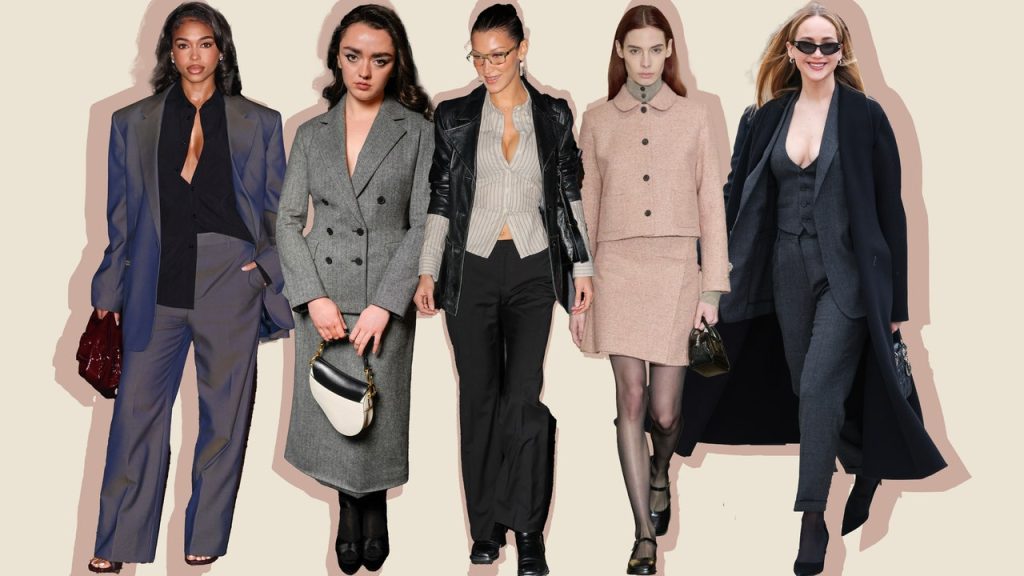Sandy Liang has recently shifted her fashion designs from the playful girlhood trend to more office-friendly looks, showcasing growth and evolution as a designer. This shift reflects a larger trend in women’s fashion that exposes expectations for women in society under patriarchal and capitalist systems. The girlhood trend, characterized by feminine and whimsical details, dominated in 2023 but evolved into a new aesthetic that glamorizes office attire. Dubbed the “office siren,” “corpcore,” or “corporate fetish,” this trend features tight pencil skirts, revealing button-downs, and glasses reminiscent of powerful office figures like those portrayed in movies such as The Devil Wears Prada.
Initially, the office siren trend gained popularity on social media platforms like TikTok, attracting young women who may not have had experience working in a corporate environment. However, the trend has since expanded beyond digital spaces and has been embraced by celebrities and fashion brands. Kim Kardashian’s Skims campaign and subsequent appearances in office-themed editorials helped propel the trend into the mainstream. Other notable figures, such as Bella Hadid and VIP guests at Dior’s fall 2024 show, have also embraced the corporate aesthetic, donning revealing office wear that blurs the line between work attire and fashion statement.
Emily Sundberg, the fashion business writer who coined the term “corporate fetish,” suggests that the office-wear obsession may be a continuation of the girlhood trend, offering a different interpretation of childhood nostalgia. Whether through bows and feminine details or power suits inspired by authority figures, individuals may be seeking to reclaim aspects of their past in a heightened and stylized manner. This trend raises questions about the underlying messages and implications of glorifying office attire as a fashion statement. As fashion continues to evolve, it will be interesting to see how designers and consumers navigate the complex intersections of nostalgia, power, and femininity in their clothing choices.
The shift from the girlhood trend to the office siren aesthetic reflects broader conversations about femininity, labor, and societal expectations for women. While the girlhood trend initially encouraged women to embrace their femininity and sensitivity, it also led to problematic gender essentialism and self-infantilization. The move towards a more sophisticated office attire aesthetic may symbolize a desire for power and authority traditionally associated with the corporate world. However, the challenge remains to navigate these representations in a way that empowers women without reinforcing patriarchal norms and stereotypes.
As fashion designers like Sandy Liang continue to evolve their collections to reflect changing cultural and societal trends, it is essential to critically examine the messages conveyed through fashion choices. The transition from playful girlhood to sexy office attire highlights the complexities of gender, power, and identity in fashion. By exploring the underlying meanings and motivations behind these trends, both designers and consumers can engage in more nuanced conversations about representation, empowerment, and the role of fashion in shaping perceptions of femininity and womanhood.


